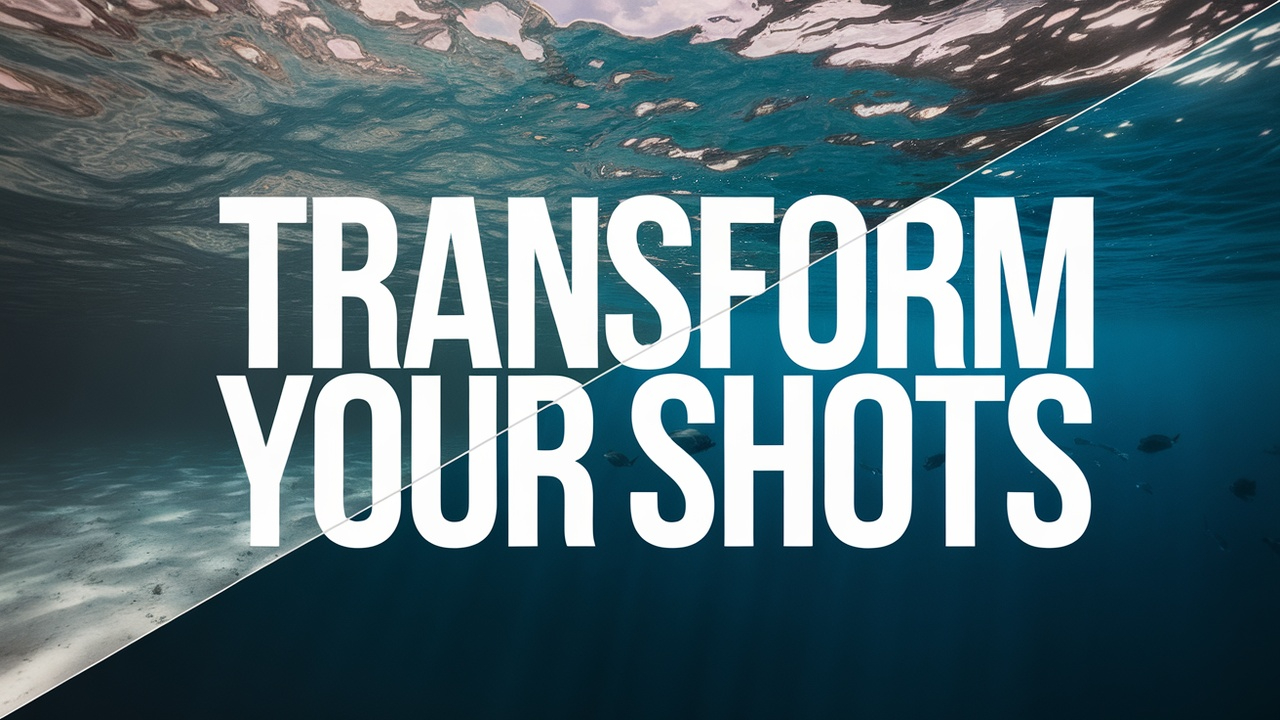Underwater photography is a captivating and rewarding hobby, but it also comes with its fair share of challenges. Many photographers, especially beginners, often make mistakes that affect the quality of their images. Here are 10 common mistakes underwater photographers make and tips to help avoid them:
1. Poor Buoyancy Control
Mastering buoyancy is essential for underwater photography. Poor control can result in stirring up sediment, damaging coral, or scaring marine life—all of which can ruin your shot.
How to Avoid It: Practice buoyancy techniques in a pool or shallow water before heading into open water. Use your breath to fine-tune buoyancy and stay neutral to avoid disturbing the surroundings.
2. Ignoring Lighting Techniques
Lighting underwater diminishes quickly, and relying solely on natural light often results in dull, lifeless images.
How to Avoid It: Invest in underwater strobes or video lights to bring out vibrant colors and details, especially in deeper waters where natural light fades.
3. Improper Composition
A poorly composed photo lacks impact and balance. Randomly positioning the subject in the frame can create cluttered or confusing images.
How to Avoid It: Use composition rules like the rule of thirds and leading lines to guide the viewer’s eye to the focal point of your image. Plan your shot and frame it carefully.
4. Wrong Camera Settings
Auto settings rarely work well underwater, often leading to underexposed or blurry images.
How to Avoid It: Learn how to use manual settings. Adjust ISO, aperture, and shutter speed based on light conditions and the distance to your subject.
5. Getting Too Close or Too Far
Being too far away reduces sharpness due to particles in the water, while getting too close might scare your subject or cause distortion.
How to Avoid It: Use the right lens for your shot and maintain an appropriate distance to ensure sharpness while preserving natural behavior.
6. Not Using Focus Properly
Blurry shots often result from improper focus settings, especially when photographing fast-moving marine creatures.
How to Avoid It: Use continuous autofocus (AF-C) for moving subjects and lock focus for stationary ones. Practice focusing techniques before diving.
7. Ignoring White Balance
Water absorbs colors, leaving photos looking overly blue or green.
How to Avoid It: Adjust white balance manually or use custom settings to restore natural colors. Alternatively, shoot in RAW format for easier color correction during editing.
8. Poor Strobe Positioning
Incorrectly positioned strobes can create backscatter, where light reflects off particles, creating a “snowstorm” effect.
How to Avoid It: Angle strobes outward and away from the lens to reduce backscatter. Test lighting positions before shooting to find the best setup.
9. Rushing Shots
Impatience often results in missed opportunities, poorly composed images, or disturbing marine life.
How to Avoid It: Move slowly, observe your surroundings, and wait for the perfect moment. Plan your approach to avoid startling your subject.
10. Neglecting Maintenance and Preparation
Failing to check equipment can lead to leaks, dead batteries, or foggy lenses.
How to Avoid It: Inspect O-rings and seals before each dive. Carry spare batteries, memory cards, and desiccants to keep gear dry and functional.
Final Thoughts
Underwater photography requires practice, patience, and preparation. By avoiding these common mistakes, you can capture stunning images that showcase the beauty of the underwater world. Remember to respect marine life and follow sustainable diving practices to preserve the environment for future photographers.
Happy diving and shooting!
Check Out Our Recommendations on Underwater Photography Tips and Gear
- Swimming With Dolphins: Ethical ConsiderationsPeople have always been fascinated by dolphins, enchanted by their playful nature and seeming friendliness. This allure has sparked a variety of ways humans interact with these intelligent creatures. Whether it’s watching them glide through hoops at theme parks, swimming alongside them in coastal areas, or witnessing them perform remarkable feats in marine parks, these … Read more
- The Mysterious World Of Deep-Sea CreaturesThe world beneath the waves is like stepping into another planet. Down there, pressures are sky-high and temperatures drop to chilling lows, where sunlight is just a myth. In this section, I’ll take you through what defines the deep-sea environment—an abyss that challenges life in every conceivable way. Imagine living under endless darkness and pressures … Read more
- Underwater Caves: A Diver’s DreamUnderwater caves are like nature’s secret art galleries, tucked away beneath the waves. Each cave is a unique masterpiece, formed over thousands of years by water’s relentless touch. These hidden gems lure divers from all corners of the globe, offering them a peek into another world filled with mystique and breathtaking beauty. Diving into these … Read more
- Scuba Diving Certification: A Complete GuideStarting out in the world of scuba diving can feel like stepping into a whole new universe, quite literally. It’s not just about the beauty but understanding the path to becoming a certified diver. Knowing what certification involves and why it’s vital sets a solid foundation for your underwater adventures. There are different levels of … Read more
- The Beauty Of Coral Reefs: A Snorkeler’s GuideCoral reefs are more than just vibrant underwater landscapes; they’re essential for the health of our oceans, providing habitat for countless marine species. Covering less than one percent of the ocean floor, they support about a quarter of all marine life. These complex ecosystems are crucial for biodiversity and play a significant role in protecting … Read more

